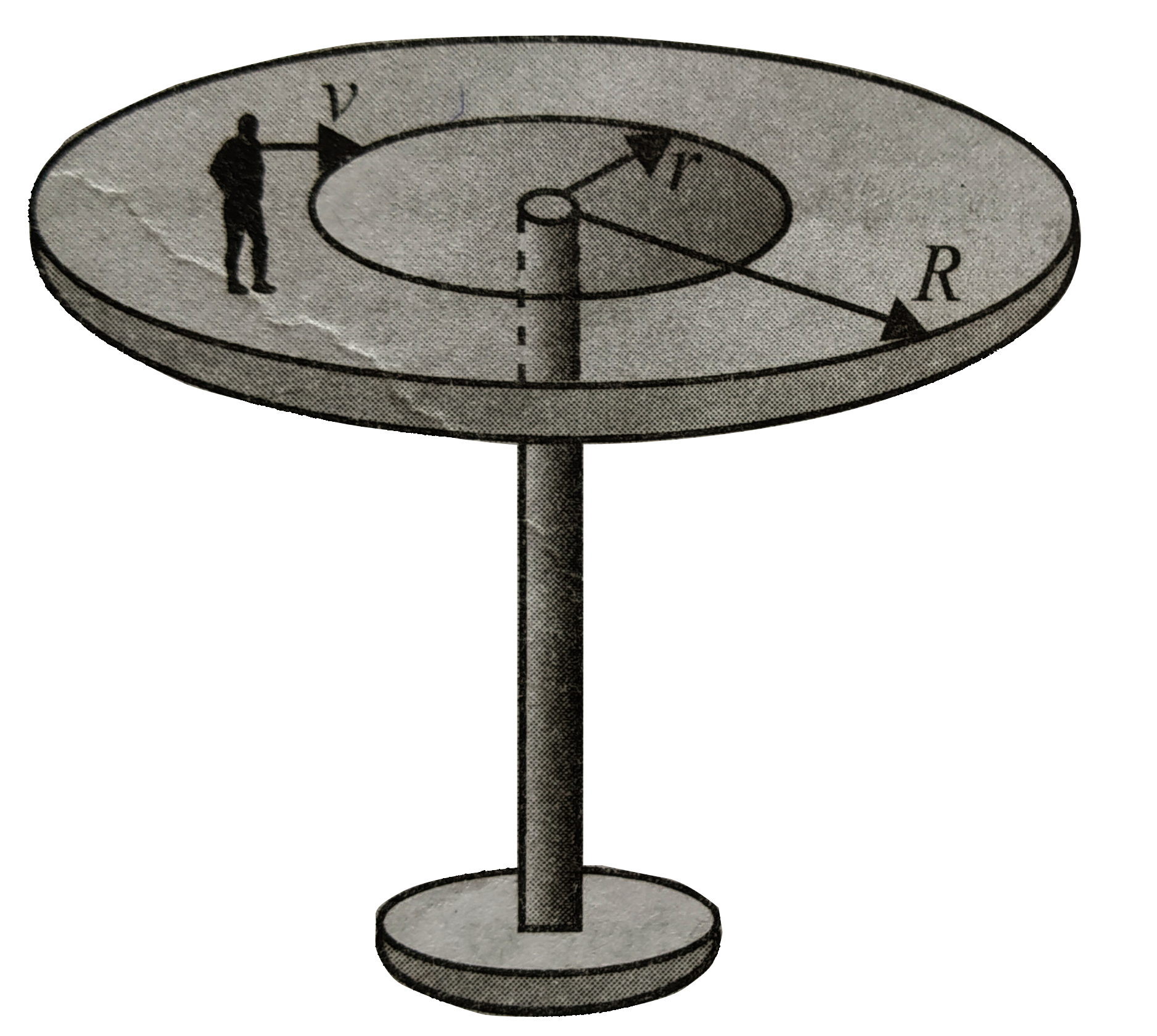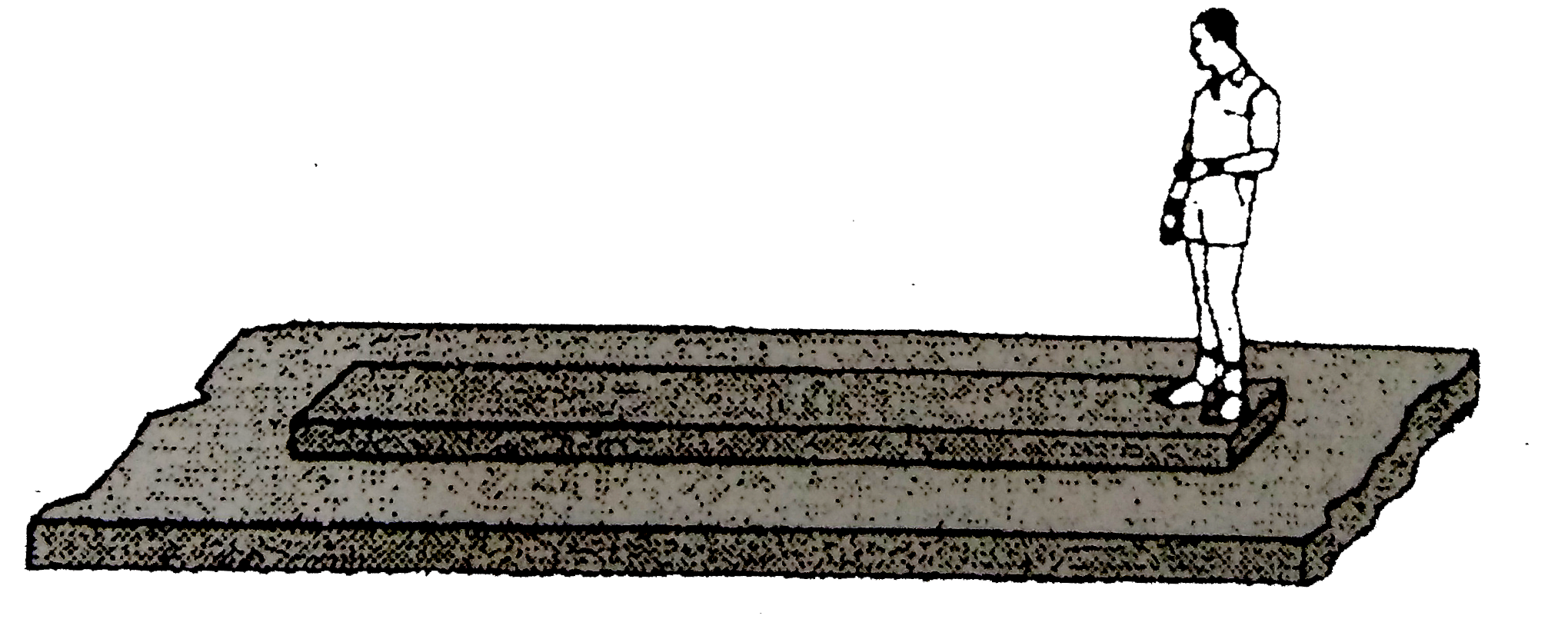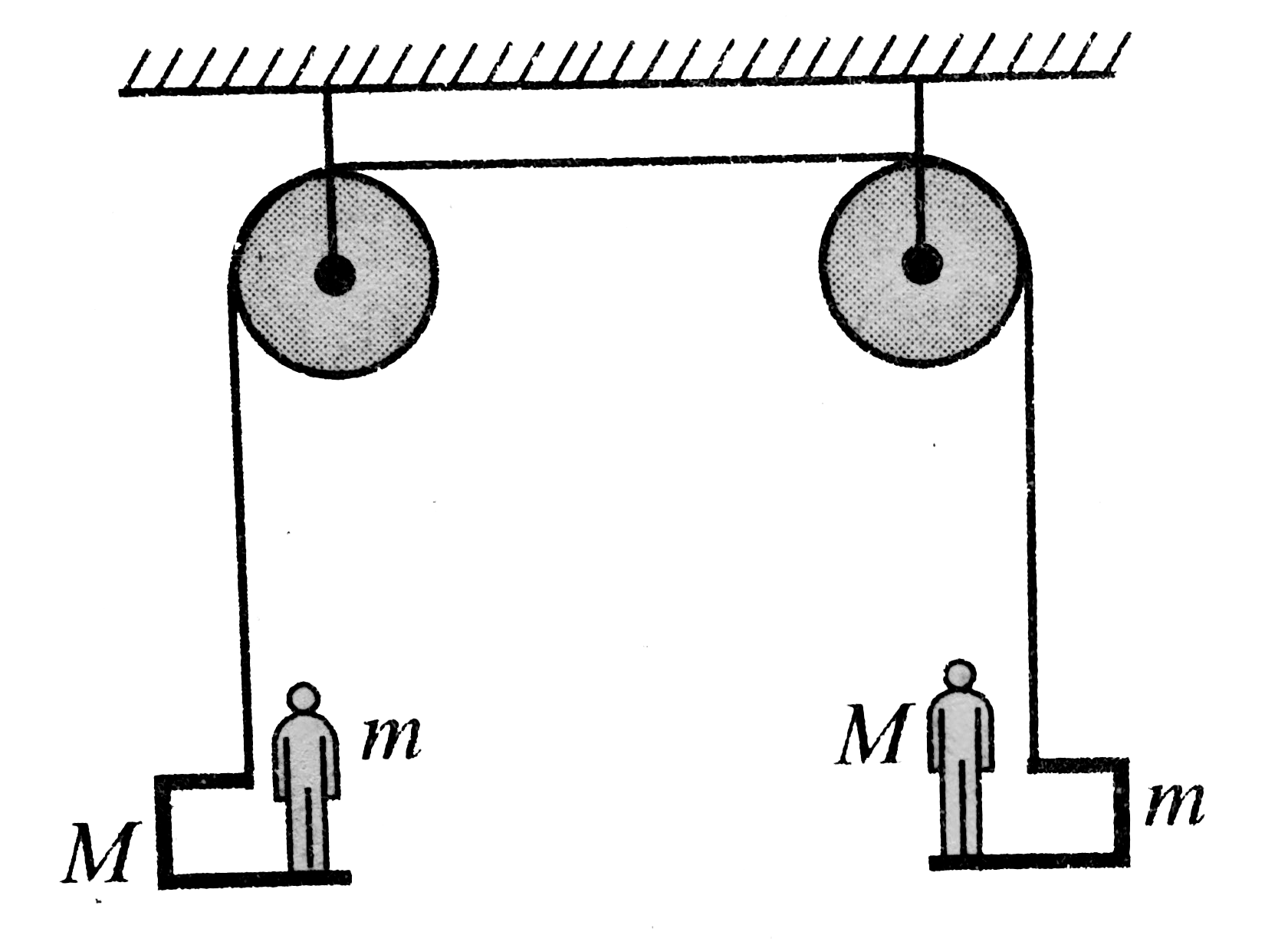A man of mass m , standing at the bottom of the staircase of height L climbs it and stands at its top .
'Work done by all forces on man is equal to the rise in potentail energy mgL '
Work done by all forces on man is zero
Work done by the gravitational force on man is mgL
The reaction force from a step does not do work because the point of application of the force does not move while the force exists
(b,d) When a man of mass m climbs up the staircase of height L, work done by the gravitational force on the man is mgl work done by internal muscular forces will be mgL as the change in kinetic energy is almost zero. Hence, total work done =-mgL+mgL=0
As the point of application of the contact forces does not move hence work done by reasction forces will be zero.
NOTE: Here work done by friction will also be zero as there is no dissipation or rubbing is involved.
Similar Questions
A man of mass m stands on a horizontal platform in the shape of a disc of mass m and radius R, pivoted on a vertical axis thorugh its centre about which it can freely rotate. The man starts to move aroung the centre of the disc in a circle of radius r with a velocity v relative to the disc. Calculate the angular velocity of the disc.
 View Solution
View SolutionA man of mass m is standing at one end of of a plank of mass M. The length of the plank is L and it rests on a frictionless horizontal ground. The man walks to the other end of the plank. Find displacement of the plank and man relative to the ground.
 View Solution
View SolutionA man of mass M stands at one end of a plank of length L Which lies at rest on a frictionless surface . The man walks to the other end of the plank. If the mass of the plank is 3M, the distance that the man moves relative to the ground is
View SolutionA man of mass m stands at the left end of a uniform plank of length L and mass M, which lies on a frictionaless surface of ice. If the man walks to the other end of the plank, then by what distance does the plank slide on the ice?
View SolutionA man of mass m stands at the left end of a uniform plank of length L and mass M, which lies on a frictionaless surface of ice. If the man walks to the other end of the plank, then by what distance does the plank slide on the ice?
View SolutionA man of mass m stands at the left end of a uniform plank of length L and mass M, which lies on a frictionaless surface of ice. If the man walks to the other end of the plank, then by what distance does the plank slide on the ice?
View SolutionA man of mass m is standing at one end of a trolley of mass Mand length L placed at rest on a smooth horizontal surface. The man starts moving towards the other end and covers distance L, then distance moved by man w.r.t ground is
View SolutionA man of mass m is standing on a platform of mass M kept on smooth ice. If the man starts moving on the platform with a speed v relative to the platform with what velocity relative to the ice does the platform recoil?
View SolutionA system of men and trolley is shown in Fig. To the left, end of the string, a trolley of mass M is connected on which a man of mass m is standing. To the right end of the string another trolley of mass m is connected on which a man of mass M is standing. Initially, the system is at rest. All of a sudden both the men leap upwards simultaneously with the same velocity u w.r.t. ground.

Find the relative velocity of left man with respect to his trolley just after he leaps upwards.View SolutionA man of mass M stands at one end of a stationary plank of length L, lying on a smooth surface. The man walks to the other end of the plank. If the mass of the plank is M/3, the distance that the man moves relative to the ground is
View Solution

